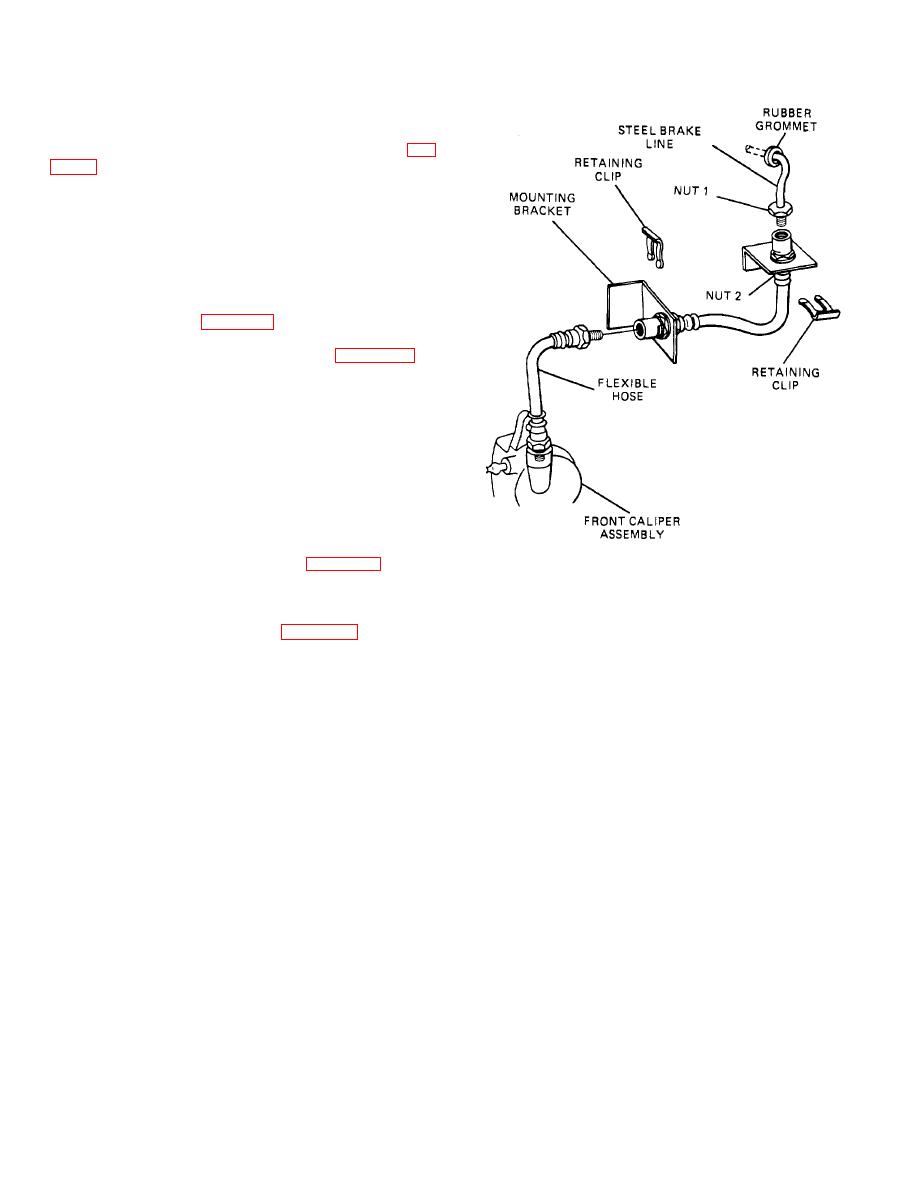
| Tweet |

Custom Search
|
|

|
||
 TM 9-8000
from the brake line connection between the pistons. At
the top of the cylinder, between the pistons, Is a bleeder
hole through which air is released when the system is
filled with brake fluid. A stepped wheel cylinder (B, fig.
the front shoe than on the rear shoe, due to self-
energizing action. By using a larger piston for the rear
shoe, the shoe receives more pressure to offset the self-
energizing action on the front shoe. This requires a
stepped wheel cylinder with two bore sizes. If it is desired
that both shoes be independently self-energizing,
especially on the front wheels, it Is necessary to have
two wheel cylinders, one for each shoe. Each cylinder
has a single piston (C, fig. 34-22), and is mounted on the
opposite side of the brake backing plate from the other
cylinder. Such an arrangement is shown In figure 34-9.
3427. Hill Holder. The hill holder provides greater
ease of vehicular control on hills and in traffic. The
device Is connected to the clutch pedal and keeps the
brakes applied as long as the clutch pedal Is depressed
when the car is on an upgrade, even after the brake
pedal Is released. The driver then Is able to use his or
her right foot for the accelerator pedal.
34-28. Brake Lines. The brake lines transmit fluid under
pressure from the master cylinder to the wheel cylinders.
High-quality double thick steel tubing (fig. 34-23) is used
Figure 34-23. Brake Lines.
where no flexing is involved. The tubing also is copper
plated and coated with lead to prevent rust and
fluid must be well above the temperatures encountered
corrosion. Due to the relative movement of the
during the most severe brake application on the hottest
suspension, a high-pressure hose (fig. 34-23) is used to
day and also maintain an even viscosity at extreme cold
transmit fluid to each front wheel brake assembly and to
temperatures. The brake fluid must be able to absorb
the components on the rear axle(s). Mounting brackets
and hold moisture and also act as a lubricant.
also are used where flex hoses connect to solid hoses.
The mounting brackets help hold the assemblies secure
a. Standard Fluid. Standard brake fluid is composed
and reduce vibration, which may cause metal fatigue.
chiefly of equal parts of alcohol and caster oil. This
combination of fluids worked well under normal
34-29. Brake Fluid. Hydraulic brake fluid is the liquid
conditions but boiled easily and became a vapor under
medium In the brake system used to transmit fluid
heavy-duty application. Standard fluid also tends to
motion and pressure to the wheel brake components.
separate into components when exposed to low
The hydraulic brake fluid used in today's modern
temperatures. The Increasing requirements of brake fluid
vehicles must have some important properties; the most
led to the development of silicone brake fluid
important are discussed below. The fluid must remain a
liquid during all operating temperatures. The boiling point
b. Silicone Brake Fluid. After 40 years of research and
of the
development, a brake fluid that was acceptable under
extreme operating conditions was developed. This fluid
achieved low water pickup and good corrosion
protection. The fluid also provides good lubrication
qualities and rubber compatibility. Silicone brake fluid
has been used in all military vehicles since the end of
1982.
TA233875
34-28
|
||
 |
||